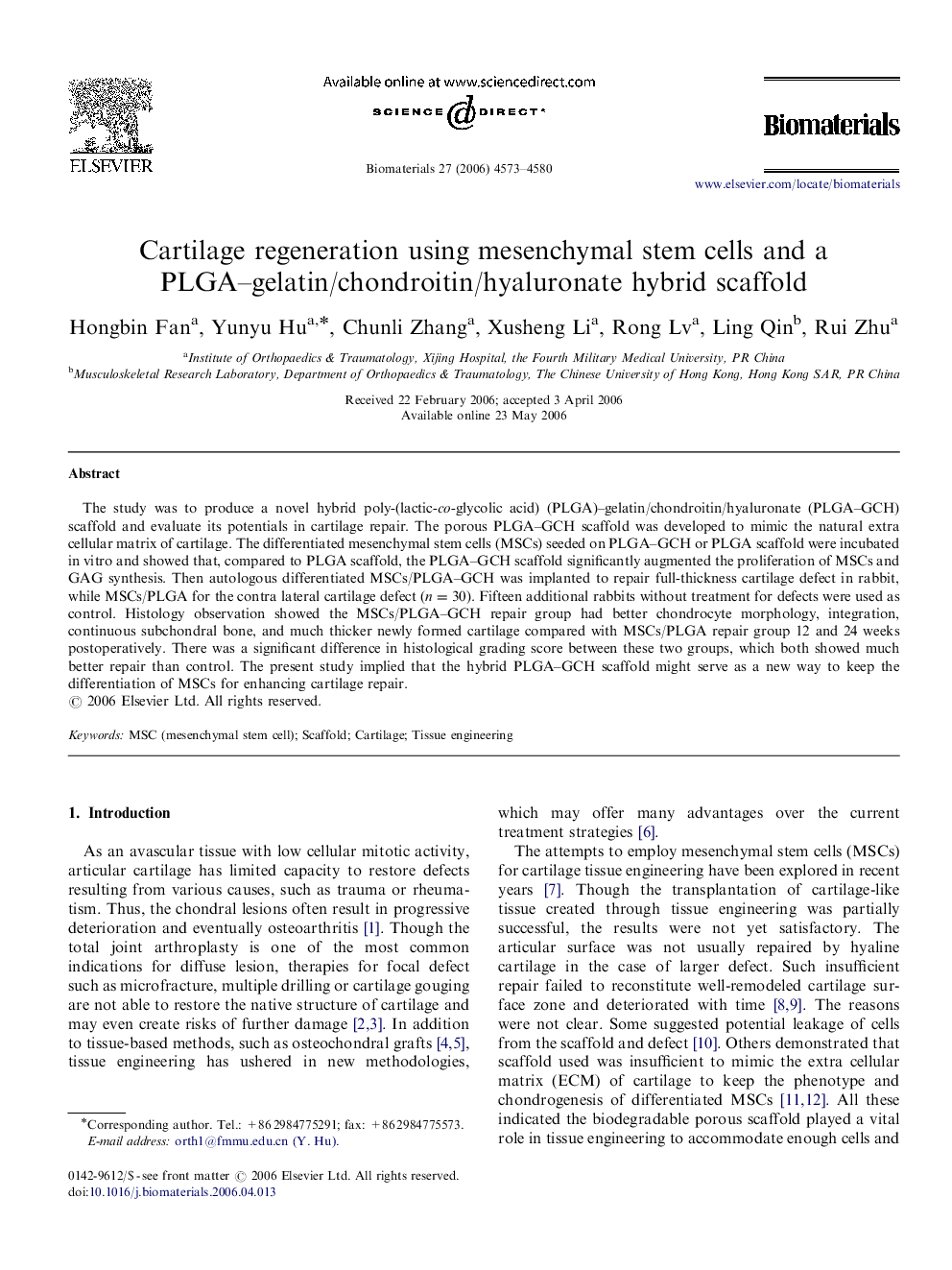| Article ID | Journal | Published Year | Pages | File Type |
|---|---|---|---|---|
| 11891 | Biomaterials | 2006 | 8 Pages |
The study was to produce a novel hybrid poly-(lactic-co -glycolic acid) (PLGA)–gelatin/chondroitin/hyaluronate (PLGA–GCH) scaffold and evaluate its potentials in cartilage repair. The porous PLGA–GCH scaffold was developed to mimic the natural extra cellular matrix of cartilage. The differentiated mesenchymal stem cells (MSCs) seeded on PLGA–GCH or PLGA scaffold were incubated in vitro and showed that, compared to PLGA scaffold, the PLGA–GCH scaffold significantly augmented the proliferation of MSCs and GAG synthesis. Then autologous differentiated MSCs/PLGA–GCH was implanted to repair full-thickness cartilage defect in rabbit, while MSCs/PLGA for the contra lateral cartilage defect (n=30n=30). Fifteen additional rabbits without treatment for defects were used as control. Histology observation showed the MSCs/PLGA–GCH repair group had better chondrocyte morphology, integration, continuous subchondral bone, and much thicker newly formed cartilage compared with MSCs/PLGA repair group 12 and 24 weeks postoperatively. There was a significant difference in histological grading score between these two groups, which both showed much better repair than control. The present study implied that the hybrid PLGA–GCH scaffold might serve as a new way to keep the differentiation of MSCs for enhancing cartilage repair.
